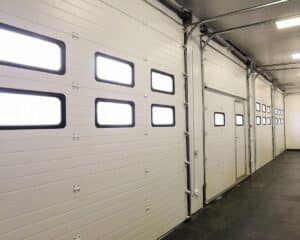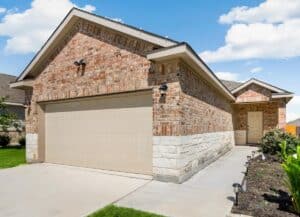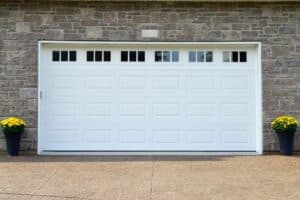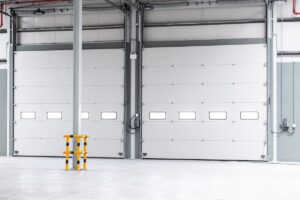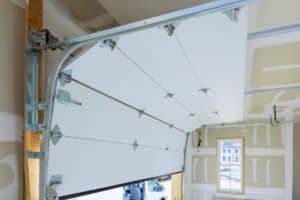Garage doors have been more than just functional elements of our homes; they reflect the technological, aesthetic, and cultural shifts of their times. This article traces the evolution of garage door styles and designs from their simple beginnings to the sophisticated systems we see today.
The Origins of Garage Doors
In the early 20th century, as the automobile became more accessible to the general public, the need for suitable storage solutions led to the development of the first garage doors. These early doors were primarily constructed from wood, chosen for its availability and ease of customization. The designs were simple and utilitarian, primarily focusing on functionality over aesthetics. Most early garage doors either swung outwards like large double doors or slid sideways along a track, similar to barn doors.
This design simplicity mirrored the era’s modest approach to automobile storage, where garages were seen more as a practical shelter for vehicles rather than an integral part of the home’s architecture. The outward-swinging doors required considerable space in front of the garage to operate effectively, which was feasible at the time due to less crowded living conditions and the prevalence of larger properties.
Post-War Developments
The period following World War II marked a significant turning point in the evolution of garage door design, driven by an economic boom and major technological advancements. As industries that had been focused on war production shifted back to consumer goods, new materials and manufacturing techniques that had been developed during the war became available for civilian use. Among these materials, steel and aluminum emerged as popular choices for garage doors, replacing the traditional wood to a large extent.
Steel and aluminum offered several advantages over wood: they were lighter, which made the doors easier to operate; more durable, providing longer-lasting solutions; and they required less maintenance, a significant advantage for homeowners.

These materials also allowed for the introduction of the roll-up mechanism, a revolutionary design that conserved driveway and garage space. Unlike the swing-out or sliding doors, roll-up doors coil into a cylinder above the garage opening when opened. This design was not only space-efficient but also compatible with the growing trend of smaller urban homes with limited exterior space.
The Rise of Automation
The 1950s marked a pivotal era in the history of garage doors with the introduction of the first automatic garage doors. This innovation dramatically changed how people interacted with their garages, shifting from manual to automated systems. The convenience offered by automatic doors cannot be overstated; it allowed homeowners to open and close their garage doors without leaving their vehicles, a particularly appreciated feature during inclement weather.
The initial models of automatic garage doors were basic by today’s standards, operating with simple mechanics and limited safety features. They typically used a chain-driven opener that worked much like a bicycle chain, pulling the door up or lowering it down along a set of tracks. These early systems were often noisy and required regular maintenance, but they set the stage for more sophisticated technologies.
As electronics became more integrated into everyday life, so too did they enhance garage door systems. Manufacturers began to incorporate electronic controls and sensors that improved the functionality and safety of garage doors. One of the most significant advancements was the introduction of photoelectric sensors in the early 1970s. These sensors could detect if an object or person was obstructing the door’s path and would automatically reverse the door to prevent accidents.
Modern Designs and Materials
Today, a diverse array of materials and styles caters to the varying tastes and architectural requirements of modern homeowners. The use of innovative materials such as fiberglass, vinyl, and various composites has revolutionized the aesthetic and functional aspects of garage doors, providing enhanced durability, minimal maintenance, and superior design flexibility.
Fiberglass, often chosen for its resistance to denting and its lightweight properties, is particularly advantageous in coastal areas due to its resistance to salt air corrosion, an issue that can significantly affect metal doors. Fiberglass can be textured to mimic the appearance of wood, allowing homeowners to enjoy the aesthetic of wood without the maintenance requirements, such as regular staining or sealing.
Vinyl garage doors are known for their durability and resistance to dents, rust, and corrosion. They are incredibly resilient against weather conditions, making them ideal for homes in harsh climates. Vinyl doors also come in a variety of colors and finishes, which do not fade or peel, reducing the need for repainting. This makes them an attractive option for homeowners looking for long-lasting aesthetic appeal without significant upkeep.
Composite materials are another popular choice, often composed of recycled wood fibers and resin, which are molded to mimic the look and feel of natural wood. Composites offer the strength and beauty of wood but are more durable against weathering and do not require the same level of maintenance. This material can also be insulated to provide better energy efficiency, which is becoming an increasingly important consideration for homeowners looking to reduce their energy costs.
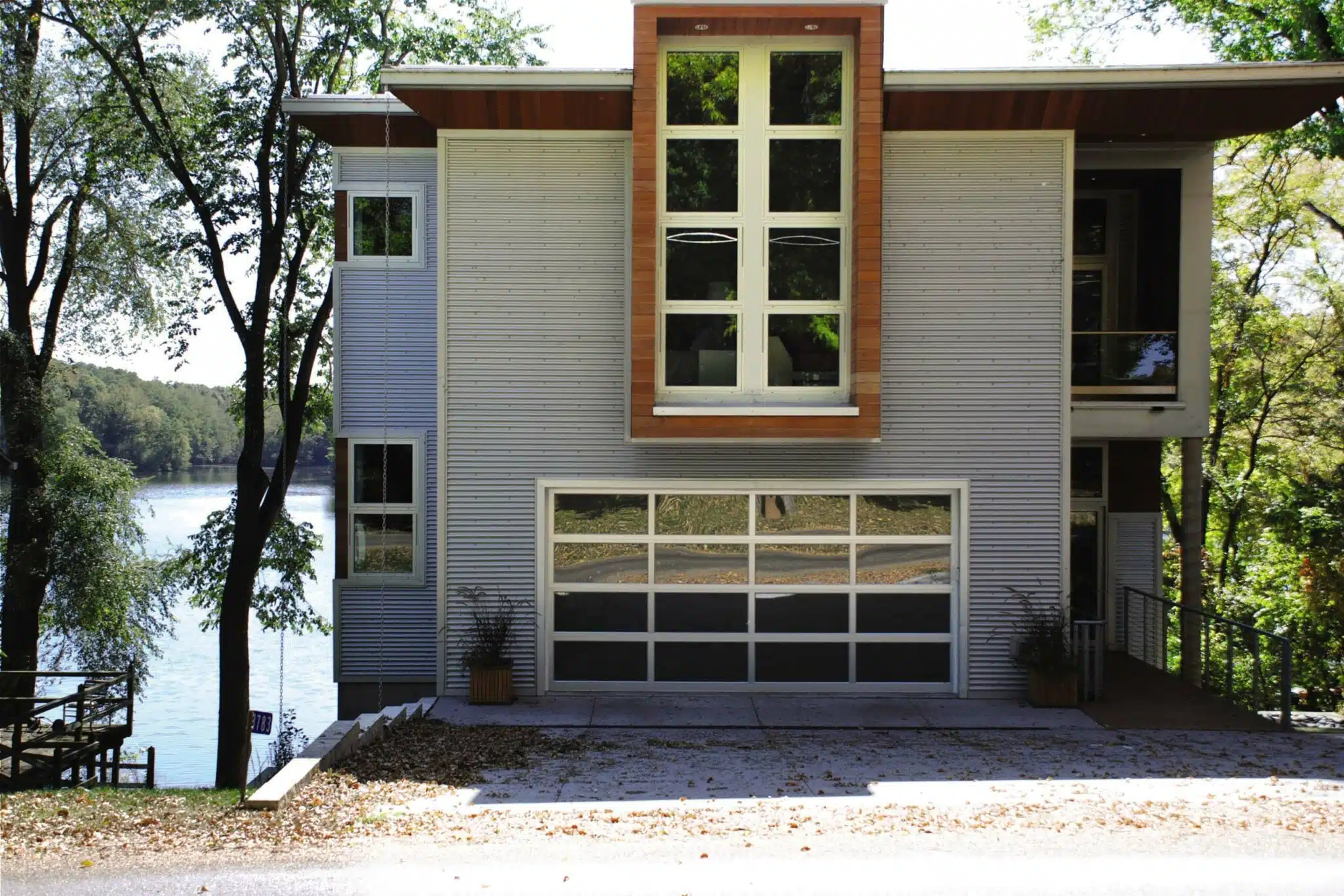
Modern design trends often emphasize sleek, minimalistic aesthetics, which blend seamlessly with contemporary and modern architectural styles. Clean lines, large windows, and subtle patterns are characteristic of these designs, providing a look that complements the minimalist trends seen in many of today’s homes. The integration of windows not only enhances the style but also serves to bring natural light into the garage, which can make the space more usable and pleasant.
FAQs
Early 20th-century automobile accessibility necessitated the development of garage doors, which were initially simple and utilitarian, primarily made from wood due to its availability and customizability.
Steel and aluminum, emerging as popular choices post-World War II, were lighter, more durable, and required less maintenance compared to wood.
Roll-up doors conserve space by coiling into a cylinder above the garage opening, making them ideal for smaller urban homes with limited exterior space.
The introduction of automatic garage doors allowed homeowners to open and close their doors without leaving their vehicles, adding significant convenience, especially during bad weather.
Fiberglass is resistant to denting, lightweight, and performs well in coastal areas due to its resistance to salt air corrosion. It can also mimic the appearance of wood without requiring regular maintenance.
Vinyl doors are durable, resistant to dents, rust, and corrosion, and maintain their color and finish without fading or peeling, making them ideal for harsh climates and minimal maintenance.
Composites, made from recycled wood fibers and resin, offer the beauty of wood with greater durability against weathering and require less maintenance. They can also be insulated to improve energy efficiency.
Modern garage doors often feature sleek, minimalistic aesthetics with clean lines and large windows, aligning with contemporary architectural styles and enhancing natural light in the garage.



